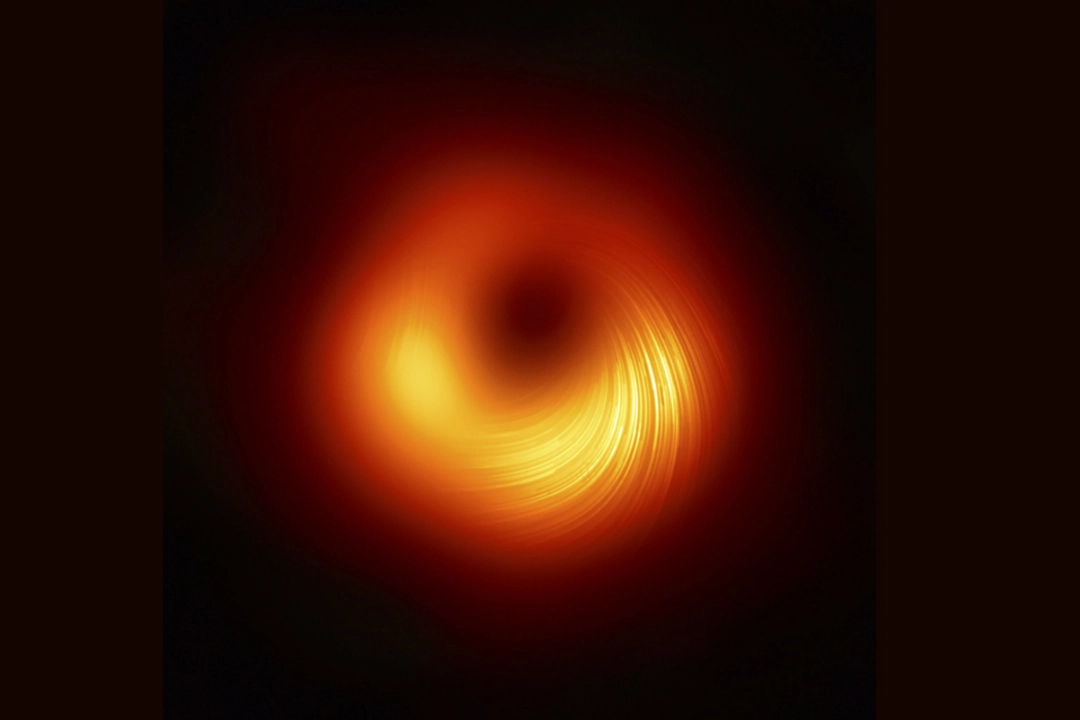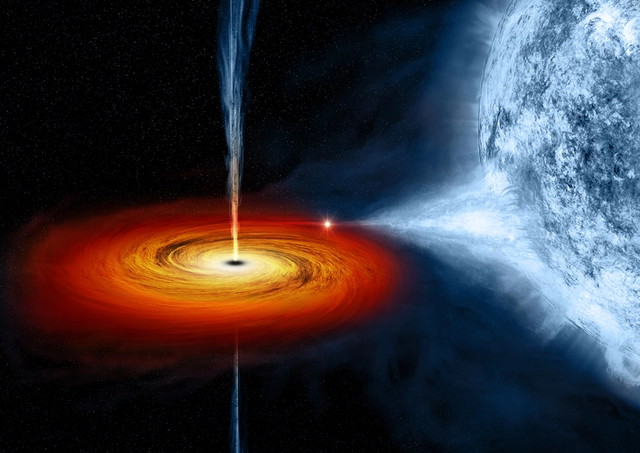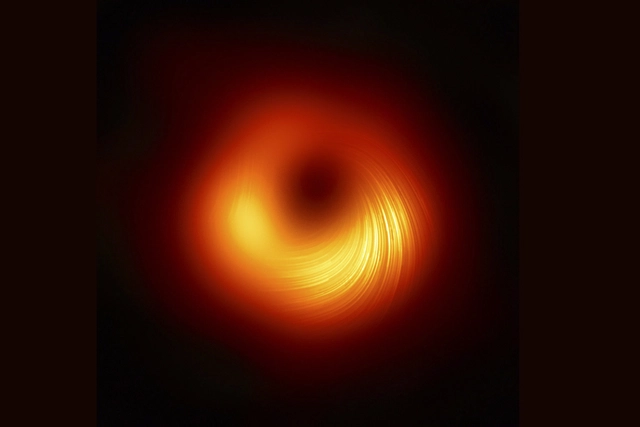
What is black hole explain it clearly?
Exploring the Mysteries of Black Holes
A black hole is a region of spacetime where gravity is so strong that nothing, not even light, can escape from it. It is formed when a massive star collapses at the end of its life. The resulting black hole has a gravitationally strong core surrounded by an event horizon from which nothing, including light, can escape.
In order to understand black holes, it's important to understand the concept of singularity. This is a point in space-time where the gravitational pull is so strong that the laws of physics break down. A singularity is the core of a black hole and is made up of an infinitely dense point of matter. This means that the mass of a black hole is compressed into an infinitely small point and all the matter and energy of a black hole is concentrated into that single point.
The event horizon is the point at which the gravitational pull of a black hole becomes so strong that nothing, not even light, can escape. This means that the event horizon marks the boundary of the black hole and is the point at which all matter and energy are trapped.
Black holes are often described as cosmic vacuum cleaners because of their immense gravitational pull. Anything that gets too close to a black hole will be pulled in and sucked into the singularity at its center. This means that black holes can swallow up stars, planets, and other matter, making them a powerful force in the universe.
Black holes also emit intense radiation, which is known as Hawking radiation. This radiation is emitted from the event horizon, and it is believed to be the result of quantum mechanical processes. This radiation is incredibly powerful, and it can be detected by powerful telescopes.
Black holes are some of the most mysterious and fascinating objects in the universe. They are incredibly powerful and can have a huge impact on the formation and evolution of galaxies. Despite their immense power, they remain shrouded in mystery and have yet to be fully understood.
Demystifying Black Holes: What Are They, and How Do They Work?
A black hole is a region of space with a gravitational field so strong that nothing, not even light, can escape from it. Black holes are formed when a massive star collapses under its own gravity. The gravity of a black hole is so strong that it will pull in anything that comes too close, including light. These objects have been studied for centuries and have been the subject of many scientific theories and debates.
The most accepted theory on how black holes work is that, when a massive star dies, its gravity causes the star to collapse in on itself. This collapse creates a region of intense gravity, which is known as a singularity, and is where a black hole forms. Anything that comes too close to the singularity, including light and matter, is pulled in and can never escape.
Black holes can also be formed by two merging stars, or when a star passes too close to another and is ripped apart by the intense gravity of the other star. In these cases, the gravity is so great that it traps the matter in the star and forms a black hole.
The intense gravity of a black hole also affects the surrounding space. As matter is pulled in, the black hole spins faster and faster. This spinning creates a huge amount of energy that is released in the form of radiation. This radiation can be detected by telescopes and is what scientists use to study black holes.
Black holes can also be detected by the effect they have on light. As light passes near a black hole, it is bent and distorted. This phenomenon is known as gravitational lensing and allows scientists to detect the presence of a black hole.
Black holes are some of the most mysterious objects in the universe and scientists are still learning more about them every day. They are one of the most powerful forces in the universe and can have a huge effect on their surroundings.
Unraveling the Fascinating Physics Behind Black Holes
A black hole is a region of spacetime where gravity is so powerful that nothing, not even light, can escape its pull. It can be formed when a massive star dies and its core collapses in on itself. Black holes are among the most mysterious and fascinating objects in the universe.
The core of a black hole is known as a singularity, which is a point of infinite density and gravity. The singularity is surrounded by an event horizon, which is the point of no return. Anything that passes through the event horizon is pulled into the singularity and can never escape. This means that black holes can swallow stars and other celestial objects, and nothing can escape the gravitational pull of a black hole.
The behavior of black holes is governed by the laws of general relativity, which is a theory of gravity developed by Albert Einstein. General relativity states that gravity is a consequence of the curvature of spacetime, and it can be used to explain how black holes form and what happens to objects that fall into them.
Black holes also have an effect on the surrounding environment. They can pull in nearby matter and energy, creating powerful jets of material that shoot out from the black hole in opposite directions. These jets can be detected by powerful telescopes, providing valuable information about the structure and behavior of black holes.
The physics of black holes is an area of active research, and scientists are constantly trying to uncover more details about these mysterious objects. By studying black holes, we can gain insight into the nature of gravity and the structure of the universe.
Decoding the Astounding Effects of Black Holes
A black hole is a region in space where gravity is so strong that not even light can escape from its grasp. It is an object of immense density, created when a massive star collapses in on itself at the end of its life cycle. Black holes are invisible as no light can escape from it, but scientists can detect them by studying their effects on the stars and gas clouds around them.
The force of gravity in a black hole is so strong that anything that falls into it is crushed into a single point, known as a singularity. This singularity has a powerful gravitational pull and can suck in nearby stars, gas clouds and even light. The intensity of a black hole’s gravitational pull increases as you get closer to it, meaning that it becomes increasingly difficult to escape its grasp.
The most spectacular effect of a black hole is the ‘accretion disc’. This is a disc of gas, dust and other material that is drawn in by the immense gravity of the black hole. As it spirals inwards towards the singularity, it is heated to extreme temperatures, releasing X-rays that can be detected by telescopes on Earth.
The intense gravity of a black hole can also cause time to move more slowly. This is known as gravitational time dilation, where time passes more quickly the further away you are from the black hole. This phenomenon has been observed in the orbits of stars close to the supermassive black hole at the center of our galaxy.
The effects of black holes extend far beyond our own galaxy. They can be found throughout the universe, with supermassive black holes at the center of most large galaxies. They can also interact with one another, merging to form even more massive black holes. As they do so, they release powerful gravitational waves that ripple outwards throughout the universe.
An Overview of the Types of Black Holes and Their Properties
Black holes are some of the strangest and most fascinating objects found in outer space. In essence, a black hole is a region of spacetime exhibiting such strong gravitational effects that nothing—not even particles and electromagnetic radiation such as light—can escape from inside it. To explain further, a black hole is formed when a massive star runs out of fuel and collapses under its own gravity. The result is an incredibly dense object, with a gravitational pull so strong that not even light can escape.
Black holes come in three main varieties: stellar-mass black holes, supermassive black holes, and intermediate-mass black holes. Stellar-mass black holes are the most common type and are created when the core of a massive star collapses in on itself. These black holes can range in mass from about 5 to several dozen times that of the Sun. Supermassive black holes, on the other hand, are much larger and can have masses ranging from millions to billions of times that of the Sun. These types of black holes are thought to exist at the center of most galaxies, including our own. Finally, there is the intermediate-mass black hole, which lies somewhere in between the other two types in terms of mass.
All black holes have certain characteristics in common. For example, they all have an event horizon, which is the point of no return beyond which nothing, not even light, can escape. They also have a singularity, which is a point of infinite density where the laws of physics as we know them break down. In addition, all black holes have a powerful gravitational pull that increases as one approaches the event horizon.
Black holes are some of the most mysterious and awe-inspiring objects in the universe. Despite their strange properties, they are an important part of the cosmic landscape and continue to fascinate scientists and astronomers alike.






